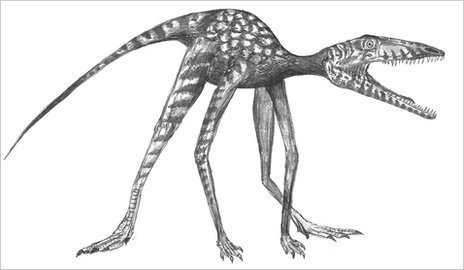Derren Brown's Blog, page 71
October 12, 2010
Magic Software Eliminates Objects From Reality Itself
"Witchcraft! That's what you'll scream after watching how this program makes objects disappear from a live video—in real time. It's the opposite of augmented reality: Instead of adding digital things, this technology eliminates objects from the real world.
The research team led by Professor Dr. Wolfgang Broll—Head of the Department of Virtual Worlds and Digital Games at the Technische Universität in Ilmenau, Germany—calls it Disminishing Reality System. Think about it as Adobe Photoshop Content-Aware fill but in real time, using a video camera connected to your computer or smartphone.
How it works?
Their software takes a live video feed and does some pretty neat seemingly magic tricks with it. After roughly selecting the object, their program reduces the quality of the frames coming from the camera. Then it removes the object from the reduced quality version. Once this is done, it improves the quality of the result and blends it with the actual frame, which is returned to the viewer in just 41ms. At that speed, the human brain doesn't notice any delay.
The results seem truly magical. I wish I could go around the world with eyeglasses that had this feature built-in. And with an "execute disintegration" button too. "
Read more at Gizmodo (Thanks Christopher C)
Upside-down Cafe Looks Like a Library, Flipped On Its Side

"A reading theme is perfect for cafes filled with bookish patrons cradling cups of cappuccino. At the new location of Manhattan coffeeshop D'Espresso, a prevalence of books also nods to its unique location: It's located just a block from the New York Public Library. But that wasn't enough for designer Anurag Nema and his team at nemaworkshop.
They took the idea of a library and flipped it, quite literally, on its side — sure, it's a design gimmick, but also one that makes good business sense and just might become a recognizable branding signature.
The "books" are actually tiles printed with sepia-toned photos of bookshelves at a local travel bookstore that ring the room, including the floor, walls and ceiling. In addition to painting unusual surfaces with intriguing patterns — whoa, you're standing on books! — it gives an Alice in Wonderland-esque sense that the room has been suddenly upended."
Read more at Fastcodesign (Thanks Christopher C)
Virgin spaceship in first solo trip

"Virgin Galactic's space tourism rocket SpaceShipTwo has completed its first solo glide flight, marking another step in the company's eventual plans to fly paying passengers.
SpaceShipTwo was carried aloft by its mothership to an altitude of 45,000 feet and released over the Mojave Desert. After the separation, SpaceShipTwo, manned by two pilots, flew freely for 11 minutes before landing at an airport runway followed by the mothership.
The entire test flight lasted about 25 minutes, and Virgin Galactic chief executive George Whitesides said: "It flew beautifully."
The six-passenger SpaceShipTwo is undergoing rigorous testing before it can carry tourists to space. In the latest test, SpaceShipTwo did not fire its rocket engine to climb to space.
Until now, SpaceShipTwo has flown attached to the wing of its special jet-powered mothership, dubbed WhiteKnightTwo, and this was the first time the spaceship has flown on its own.
The news was hailed by space tourism advocates, with John Gedmark, executive director of the Commercial Spaceflight Federation, saying: "The flight marks another key milestone towards opening the space frontier for private individuals, researchers, and explorers.""
Read more at Yahoo News
October 11, 2010
Finnish version of Tricks Of The Mind just arrived.
Google translates the title as 'How I Control The View'.
[image error]
Can You Believe This is a Wall Painting?
MIT Grad Student Comes Up With Webcam System That Can See If Your Heart Is Healthy
"Here's a scary development for webcams, a MIT grad student has figured out how to determine if your heart is healthy just by looking at you via a webcam. The system uses an open-source face-tracking program and will study someone's face, measuring the slight variations in brightness produced by the flow of blood through blood vessels in the face. So once the developer was able to determine how to account for variations in lighting and image quality, he was easily able to measure a pulse, and it worked well enough that it matched up with the results of FDA-approved devices. The hardware used is simple and cheap enough that it could be installed almost anywhere from a mirror in your home, or even using your own cell phone camera. The system could be improved in the future to even double up as a lie detector, figuring out if you're nervous about stealing the cookies from the cookie jar every night."
Via Ubergizmo (Thanks Christopher C)
Deaf 'rewire brain' to see better
People deaf from birth may be able to reassign the area of their brain used for hearing to boost their sight, suggests a study. Improved peripheral vision, often reported by deaf people, could be generated by the brain area which would normally deal with peripheral hearing. The Canadian research, published in the journal Nature Neuroscience, tested the theory using congenitally deaf cats.
The researcher involved said the brain did not let unused space "go to waste". Both deaf and blind people frequently say their other senses are sharper by way of compensation. However, it has not been obvious how the brain might achieve this. The researchers from the University of Western Ontario used their cat studies to test which parts of the brain were responsible. Their cats were given tests in which lights flashed at the very periphery of their normal vision. When only the auditory cortex – the part of the brain which normally processes sound information – was deactivated temporarily, their enhanced peripheral vision appeared to be switched off as well.
Narrowing the search, the team found that the part of the auditory cortex responsible was the part which would ordinarily detect peripheral sounds. Dr Stephen Lomber, who led the research, said: "The brain is very efficient, and doesn't let unused space go to waste. "The brain wants to compensate for the lost sense with enhancements that are beneficial. "For example, if you're deaf, you would benefit by seeing a car coming far off in your peripheral vision, because you can't hear that car approaching from the side – the same with being to more accurately detect how fast something is moving." He said that understanding what happens within the auditory cortex in the absence of sound information coming in could help doctors work out what is happening when someone with hearing loss is given a cochlear implant. "If the brain has rewired itself to compensate for the loss of hearing, what happens when hearing is restored?"
Read more at BBC News (Thanks @DiBroon)
October 10, 2010
UK Animators Use Cellphone and Microscope To Film Smallest Stop-Motion Animation Ever
"Using a Nokia N8 smartphone and a CellScope, the team behind the Wallace & Gromit series has made the world's smallest stop-motion animation film.
Follow 0.35-inch-tall Dot as she runs through an obstacle course made of British currency, rides a bumblebee and stitches her way out of trouble. The music is catchy too.
Animators at the UK studio Aardman used a 3D printer to make 50 different versions of Dot, because she is too small to manipulate or bend like they would other stop-motion animation characters. The figurine's tiny features stretched the limit of the printer — any smaller and it would be hard to make distinct limbs. Each one was hand-painted by artists looking through a microscope.
Directors Ed Patterson and Will Studd attached a CellScope (winner of a PopSci Best of What's New award in 2008) to a Nokia N8 12-megapixel camera to film Dot's struggle in her microscopic world. They said Nokia commissioned them to make the film in celebration of CellScope's potential to improve medicine in the developing world.
CellScope is the brainchild of Daniel Fletcher, a bioengineer at the University of California-Berkeley, who combined a cellphone camera with a 50x magnification microscope."
Read more at PopSci (Thanks @XxLadyClaireXx)
Evidence of water in megacanyon on Mars

"Melas Chasma, a huge canyon forming part of the 4000 km Valles Marineris rift valley on Mars, plunges 9 km below the surrounding plains in this image, which was taken by the High Resolution Stereo Camera on the European Space Agency's Mars Express orbiter, making it one of the deepest depressions on the planet.
Released today by the German Aerospace Centre, the image also shows evidence that water once flowed and lakes once stood on the Martian surface. White lines are channels cut by water and lighter-coloured regions indicate deposits of sulphate components. Rock formations display evidence of flow textures, indicating that they were once deposited by liquid water, water ice or mud."
Read more at New Scientist (Thanks UKgnome)
Dinosaur origins pushed further back in time

"The first dinosaur-like creatures emerged up to nine million years earlier than previously thought. That is the conclusion of a study on footprints found in 250 million-year-old rocks from Poland. Writing in a Royal Society journal, a team has named the creature that made them Prorotodactylus. The prints are small – measuring a few centimetres in length – which suggests the earliest dinosaur-like animals were about the size of domestic cats. They would have weighed at most a kilogram or two, they walked on four legs and they were very rare animals. Their footprints comprised only two or three per cent of the total footprints on this site. The footprints date to just two million years after the end-Permian mass extinction – the worst mass extinction in the history of the planet."
According to Stephen Brusatte, from the American Museum of Natural History in New York, who led the research: "In geological terms this is just the blink of an eye." He told BBC News: "We can basically say that the dinosaur lineage originated in the immediate aftermath of this extinction which is a completely new idea and a very radical re-interpretation of the early history of dinosaurs". In the end-Permian extinction event, more than 90% of all life on Earth was wiped out due to massive volcanic eruptions, sudden global warming and the stagnation of the oceans. Up until recently, scientists had thought that dinosaurs emerged 15 to 20 million years after the mass extinction, when the planet had become more habitable. But the new footprints suggest that the rise of dinosaurs was intimately related to the devastating extinction event."
Read more at BBC News (Thanks @XxLadyClaireXx)
Derren Brown's Blog
- Derren Brown's profile
- 797 followers




